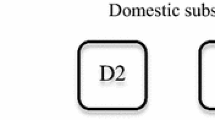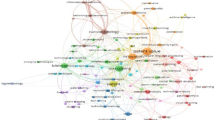Abstract
Patent statistics are a frequently used innovation indicator for the description and analysis of technological strengths and weaknesses, both on the macro and the micro level. Patent data has a broad coverage, high reliability, allows a very differentiated perspective and the data has become easier in availability and accessibility. Especially when cross country comparisons and comparative assessments are intended, a deep knowledge and understanding of patent systems is required. In the 1990s Triadic patents, which were able to balance the home advantage of domestic applicants/inventors. An increasing internationalisation and globalisation makes it also necessary to adapt the patent analyses to this new world order. In this paper the so called Transnational patents are suggested, which allows to grasp the new relations and relative positions between the industrialised, industrialising and emerging countries. The existing concepts are presented and discussed and contrasted against the concept of Transnational Patents.








Similar content being viewed by others
Notes
TRIPS = Trade-Related Aspects of Intellectual Property Rights.
For further details see also Nesta and Patel (2004).
For a list of member countries see http://www.epo.org/about-us/epo/member-states.html.
For more details see OECD (2009).
The PCT system is explained in the next section in more detail.
Most patents are filed within half a year after the invention, as a pre-publication before the filing can imply a rejection of the grant due to lack of novelty.
For a list of countries see http://www.wipo.int/treaties/en/ShowResults.jsp?lang=en&treaty_id=6.
For a more detailed description of the method, refer to Frietsch and Schmoch (2006).
However all direct EPO applications with national precursor application are included.
References
Arundel, A., & Patel, P. (2003). Strategic patenting, background report for the trend chart policy benchmarking workshop “New Trends in IPR Policy”.
Belitz, H., Edler, J., & Grenzmann, C. (2006). Internationalisation of industrial R&D. In U. Schmoch, C. Rammer, & H. Legler (Eds.), National systems of innovation in comparison. Structure and performance indicators for knowledge societies. Dordrecht: Springer.
Blind, K., Edler, J., Frietsch, R., & Schmoch, U. (2006). Motives to patent: Evidence from Germany. Research Policy, 35(5), 655–672.
Dernis, H., & Kahn, M. (2004). Triadic patent families methodology, STI working paper 2004/2. Paris: OECD.
Edler, J., Döhrn, R., & Rothgang, M. (2003). Internationalisierung industrieller Forschung und grenzüberschreitendes Wissensmanagement—Eine empirische Analyse aus der Perspektive des Standortes Deutschland, Technik, Wirtschaft und Politik, Fraunhofer ISI. Heidelberg: Physica-Verlag.
EPO; JPO; USPTO. (2006). Trilateral statistical report—edition 2005, Munich; Tokyo; Alexandria, VA: EPO; JPO; USPTO.
Frietsch, R. (2006). Patente in Europa und der Triade—Strukturen und deren Veränderung, Bundesministerium fuer Bildung und Forschung (BMBF) (Ed.), Studien zum deutschen Innovationssystem Nr. 12-2006. Berlin: BMBF.
Frietsch, R., & Schmoch, U. (2006). Technological structures and performance reflected by patent indicators. In U. Schmoch, C. Rammer, & H. Legler (Eds.), National systems of innovation in comparison. Structure and performance indicators for knowledge societies. Dordrecht: Springer.
Gehrke, B., Krawczyk, O., & Legler, H. (2007). Forschungs- und wissensintensive Wirtschaftszweige in Deutschland: Außenhandel, Spezialisierung, Beschäftigung und Qualifikationserfordernisse, Bundesministerium fuer Bildung und Forschung (BMBF) (Ed.), Studien zum deutschen Innovationssystem Nr. 17-2007. Berlin: BMBF.
Gerstenberger, W. (1992). Zur Wettbewerbsposition der deutschen Industrie im High-Tech-Bereich. ifo Schnelldienst, 13, 14–23.
Griliches, Z. (1990). Patent statistics as economic indicators: A survey. Journal of economic literature, 28, 1661–1707.
Grupp, H., Münt, G., & Schmoch, U. (1996). Assessing different types of patent data for describing high-technology export performance In: OECD (Ed.), Innovation, patents and technological strategies: Proceedings of a Workshop held at OECD Headquarters in Paris (pp. 271–287), 8–9 December 1994. Paris: OECD.
Kortum, S., & Lerner, J. (1999). What is behind the recent surge in patenting? Research Policy, 28, 1–22.
Krawczyk, O., Legler, H., Frietsch, R., Schubert, T., & Schumacher, D. (2007). Die Bedeutung von Aufhol-Ländern im globalen Technologiewettbewerb, Bundesministerium fuer Bildung und Forschung (BMBF) (Ed.), Studien zum deutschen Innovationssystem Nr. 21–2007. Berlin: BMBF.
Legler, H., & Krawczyk, O. (2006). Forschungs- und Entwicklungsaktivitäten im internationalen Vergleich, Bundesministerium fuer Bildung und Forschung (BMBF) (Ed.), Studien zum deutschen Innovationssystem Nr. 1-2006. Berlin: BMBF.
Mattsson, P., Laget, P., Nilsson, A., & Sundberg, C.-J. (2008). Intra-EU vs. extra-EU scientific co-publication patterns in EU. Scientometrics, 75, 555–574.
Nesta, L., & Patel, P. (2004). National patterns of technology accumulation: Use of patent statistics. In H. F. Moed, W. Glänzel, & U. Schmoch (Eds.), Handbook of quantitative science and technology research. The use of publication and patent statistics in studies of S&T systems (pp. 531–551). Dordrecht: Kluwer Academic Publisher.
OECD (Ed.). (2004). Compendium of patent statistics 2004. Paris: OECD.
OECD (Ed.). (2009). OECD patent statistics manual. Paris: OECD.
Patel, P., & Frietsch, R. (2007). Exploratory study to test the feasibility of using Patent data for monitoring the Globalization of R&D, Report to IPTS by the ERAWATCH Networks ASBL within the Framework Service Contract Nr -150176–2005-F1SC-BE. Brighton/Karlsruhe: SPRU/Fraunhofer ISI.
Pavitt, K. (1982). R & D, patenting and innovative activities. A statistical exploration. Research Policy, 11(1), 33–51.
Pavitt, K. (1985). Patent statistics as indicators of innovative activities: Possibilities and problems. Scientometrics, 7, 77–99.
Rahn, G. (2000). Die japanische Pro-Patent-Politik im Zeitalter der Geistigen Schöpfungen, Presentation on September 29, 2000, before the members of the court of appeal of the European patent office. Accessible through www.hepnet.de/_inews_/files/1044610909-35065/download_d/JPProPatentPolicy.pdf.
Schmoch, U. (2007). Leistungsfähigkeit und Strukturen der Wissenschaft im internationalen Vergleich, Bundesministerium fuer Bildung und Forschung (BMBF) (Ed.), Studien zum deutschen Innovationssystem Nr. 11-2007. Berlin: BMBF.
Schmoch, U. (2009). Patent analyses in the changed legal regime of the US Patent Law since 2001. World Patent Information. doi:10.1016/j.wpi.2008.12.002.
Schmoch, U., & Hinze, S. (2004). Opening the black box. In H. F. Moed, W. Glänzel, & U. Schmoch (Eds.), Handbook of qualitative science and technology research. The use of publication and patent statistics in studies of S&T systems (pp. 215–235). Dordrecht: Kluwer Academic Publishers.
Schmoch, U., & Schubert, T. (2008). Are international co-publications an indicator for quality of scientific research? Scientometrics, 74(3), 361–377.
Soete, L. G., & Wyatt, S. M. E. (1983). The use of foreign patenting as an internationally comparable science and technology output indicator. Scientometrics, 5, 31–54.
UNCTAD (Ed.). (2005). World Investment Report (2005). Transnational companies and the internationalisation of R&D. Geneva: UNCTAD.
US Patent and Trademark Office (USPTO). (2007). Number of utility patent applications filed in the United States, by country of origin, calendar year 1965 to present. Alexandria, VA: USPTO.
Van Ark, B. A., Dougherty, S. M. B., Inklaar, R. A., & McGuckin, R. H. (2008). The structure and location of business R&D: Recent trends and measurement implications. International Journal of Foresight and Innovation Policy, 4(1), 8–29.
Author information
Authors and Affiliations
Corresponding author
Rights and permissions
About this article
Cite this article
Frietsch, R., Schmoch, U. Transnational patents and international markets. Scientometrics 82, 185–200 (2010). https://doi.org/10.1007/s11192-009-0082-2
Received:
Accepted:
Published:
Issue Date:
DOI: https://doi.org/10.1007/s11192-009-0082-2




